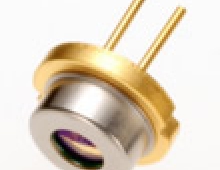
Mitsubishi Develops MPEG2 Technology Allowing Two Hours of HDTV Images on DVDs
Mitsubishi Electric Corp. has developed MPEG2 video encoding technology that enables two hours of recording of high-vision images of satellite digital broadcasting and terrestrial-wave digital broadcasting on one DVD.
In satellite digital broadcasting, the MPEG2 stream is currently transmitted at the encoding speed of 18Mbps or 24Mbps. By recompressing the MPEG2 stream, however, it is possible to squeeze the stream to nearly half of the original volume to realize about 10Mbps and maintain almost the same level of image quality. This means that a high-definition television (HDTV) image data of about two hours long, which is the standard running time of a movie, can be recorded onto one single-sided, two-layer 9.4GB DVD.
The company has staged a demonstration in which the HDTV-compatible, all-purpose MPEG2 decoder LSI played back the 1080I (interlaced scanning of 1,080 scanning lines) image data, which were encoded using the new technology. More concretely, the MPEG2 data recorded on a rewritable DVD were read out by using the DVD equipment connected with a PC. Then the MPEG2 data, which had an encoding speed of 9.8Mbps, were converted into 1080I image data using the MPEG2 decoder LSI that was installed in the PC. In the next stage, the image data were played back on the high-vision TV receiver.
Mitsubishi said the technology could be applied to, for example, the DVD video recorder and HDD video recorder that are capable of recording high-vision images. The company also said it may be possible to apply the technology to other products, such as the authoring tools for the package media. Mitsubishi said it is promoting the optimization of encoding parameters to enhance the efficiency of the encoding. The parameters include those which are related to, for example, the motion-compensation (MC) prediction, discrete cosine transform (DCT) and quantization. The company has launched the development of the MPEG2 encoder LSIs equipped with the new encoding technology. It intends to start manufacturing of the new MPEG2 encoder LSIs in 2004, when such products are expected to be in strong demand.
The company has staged a demonstration in which the HDTV-compatible, all-purpose MPEG2 decoder LSI played back the 1080I (interlaced scanning of 1,080 scanning lines) image data, which were encoded using the new technology. More concretely, the MPEG2 data recorded on a rewritable DVD were read out by using the DVD equipment connected with a PC. Then the MPEG2 data, which had an encoding speed of 9.8Mbps, were converted into 1080I image data using the MPEG2 decoder LSI that was installed in the PC. In the next stage, the image data were played back on the high-vision TV receiver.
Mitsubishi said the technology could be applied to, for example, the DVD video recorder and HDD video recorder that are capable of recording high-vision images. The company also said it may be possible to apply the technology to other products, such as the authoring tools for the package media. Mitsubishi said it is promoting the optimization of encoding parameters to enhance the efficiency of the encoding. The parameters include those which are related to, for example, the motion-compensation (MC) prediction, discrete cosine transform (DCT) and quantization. The company has launched the development of the MPEG2 encoder LSIs equipped with the new encoding technology. It intends to start manufacturing of the new MPEG2 encoder LSIs in 2004, when such products are expected to be in strong demand.

















